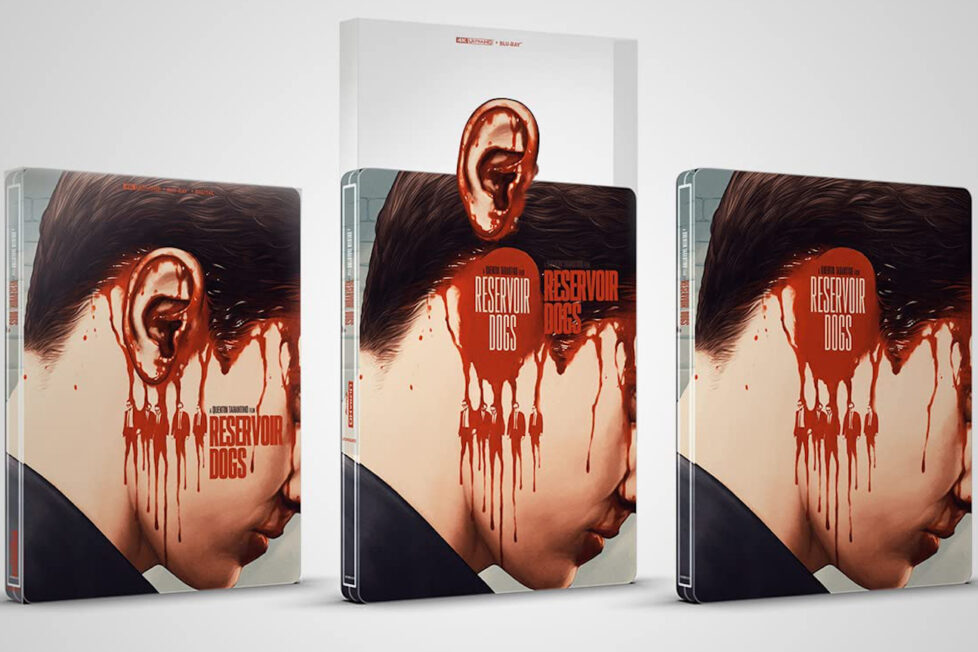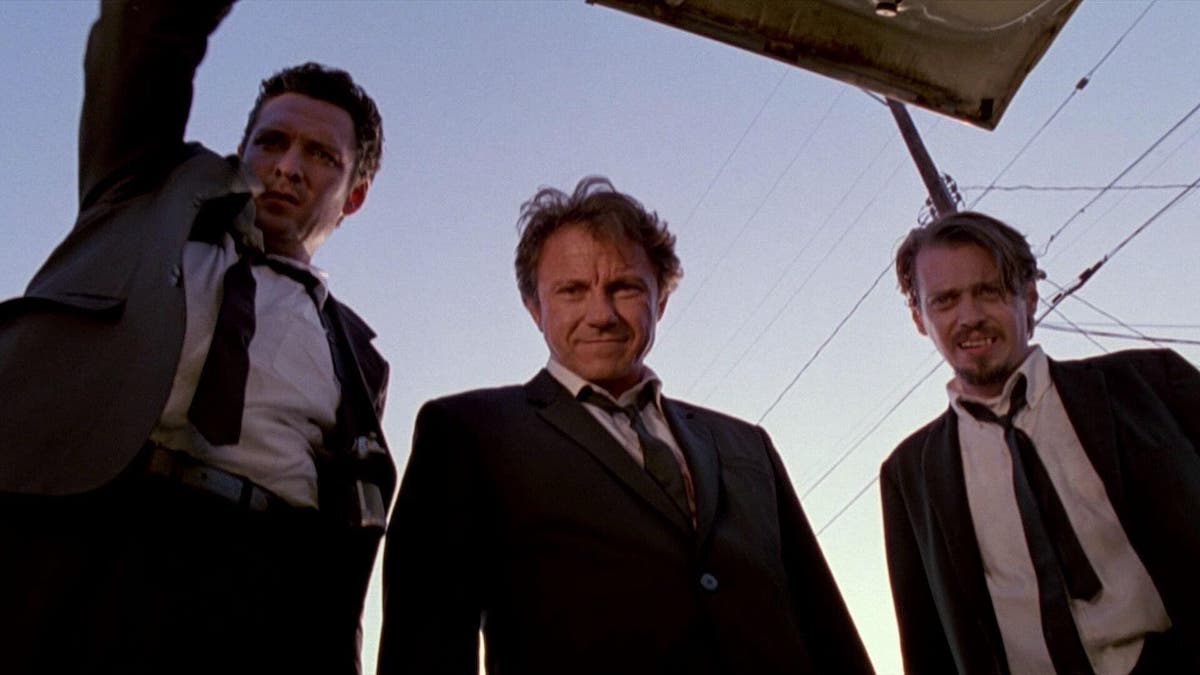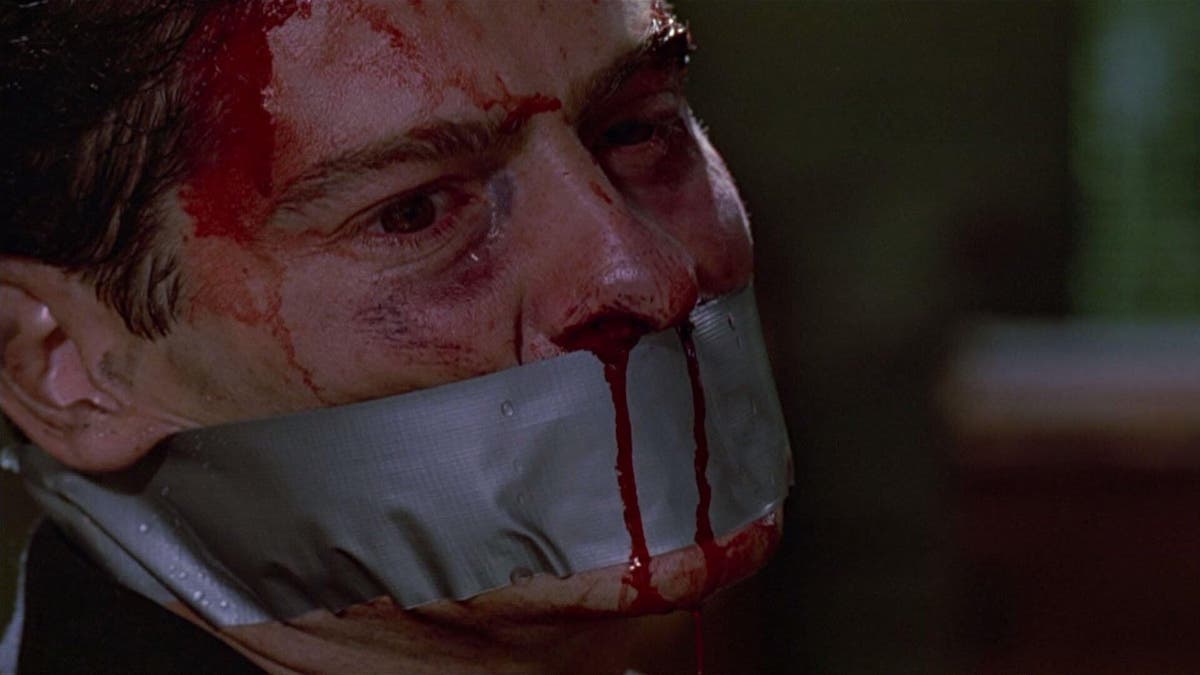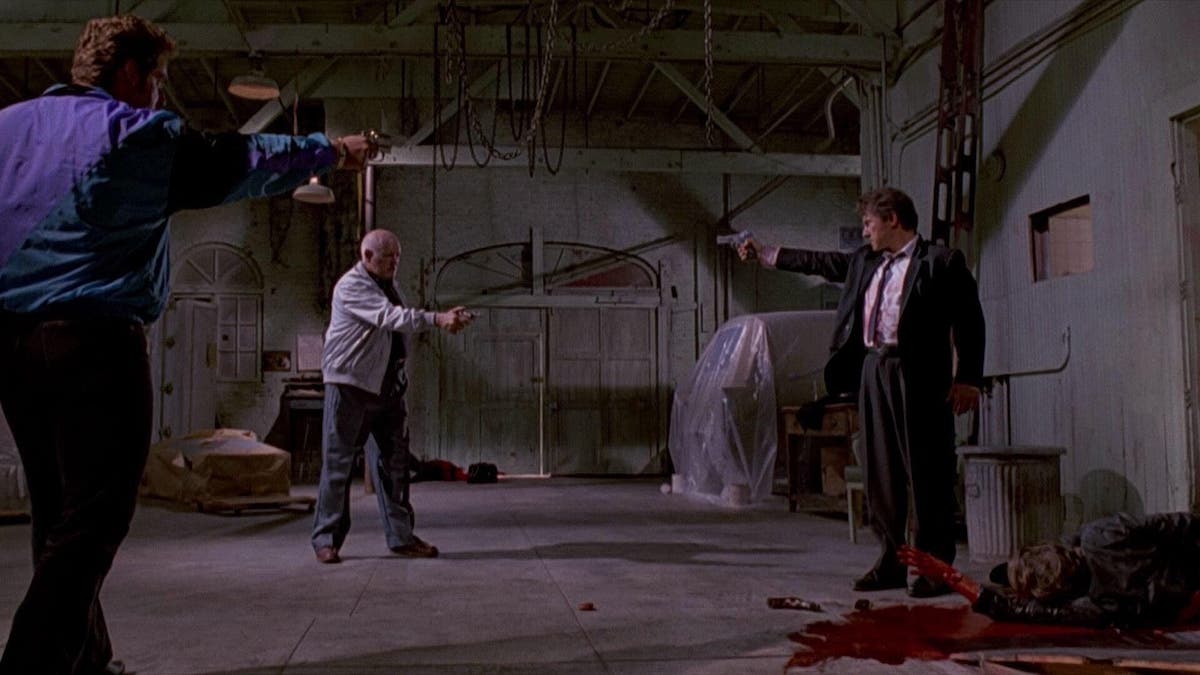RESERVOIR DOGS (1992)
When a simple jewellery heist goes horribly wrong, the surviving criminals begin to suspect that one of them is a police informant.

When a simple jewellery heist goes horribly wrong, the surviving criminals begin to suspect that one of them is a police informant.


Quentin Tarantino’s Reservoir Dogs feels like the first true “1990s movie”, despite drawing so heavily on 1960s and ’70s cinema as a response to the filmmaker’s dislike of what Hollywood became in the 1980s with the rise of blockbusters and cash-in sequels. It’s a perfect ‘calling card’ debut, in how it clearly demonstrates Tarantino’s talent behind the camera (working with a low $1.5M budget that attracted a few big names thanks to the richness of his own screenplay), and practically set the tone for the decade’s crime film output. Pulp Fiction (1994) was an arguably bigger influence on the ’90s and the same genre, as the proliferation of gangster films telling non-linear stories with smart-ass dialogue truly began after it became a phenomenon, but everything Pulp Fiction perfected was done here first.
Reservoir Dogs concerns a diamond heist gone wrong, but for budget reasons we spend most of our time in the times before and after. Crime boss Joe Cabot (Lawrence Tierney) and his son “Nice Guy” Eddie (Chris Penn) have put together a five-man team of gangsters to steal the aforementioned gems, all given iconic aliases to prevent them squealing to the cops if they get caught: Mr White (Harvey Keitel), Mr Orange (Tim Roth), Mr Blonde (Michael Madsen), Mr Pink (Steve Buscemi), Mr Blue (Edward Bunker), and Mr Brown (Tarantino himself)…

We meet the besuited gang at a Los Angeles diner shooting the shit about the meaning behind Madonna’s lyrics to “Like A Virgin” and the etiquette of tipping, before a hard cut to when the shit’s hit the fan and Mr Orange is bleeding out in a getaway car driven by Mr White. They both arrive at the agreed rendezvous, an empty warehouse, soon joined by an anxious Mr Pink, and over the course of the movie we start to put together what’s happened and what might happen next. There are also cleverly integrated flashbacks providing occasional context for four of the main criminals—White, Pink, Blonde, and Orange—and why they decided to take this job.
It’s a beautifully simple setup and story that allows Reservoir Dogs’ best attribute to shine: Tarantino’s screenplay, which he’d originally planned to shoot for $30,000 on 16mm black-and-white. His friend and producer Lawrence Bender so loved the script that he showed it to his acting teacher, whose wife passed it on to Harvey Keitel (Bad Lieutenant), who liked it so much he came aboard as a producer and helped elevate the budget by over $1M. This in turn enabled them to hire professional actors Buscemi, Madsen, and Roth after holding casting sessions in New York—which was another remarkable bit of good fortune, considering all three became major names in the years that followed.
As one tends to find with Tarantino, nothing in Reservoir Dogs is wholly original. The heist is inspired by Stanley Kubrick’s film noir The Killing (1956), the use of codenames comes from The Taking of Pelham One Two Three (1974), and even the iconic torture scene of a cop has its origin in Sergio Corbucci’s Django (1966). But these influences are exactly that. They’re homages and touchstones, never lazy ways to copy what already worked and claim credit by pilfering from movies the average filmgoers will have forgotten about.

And what’s definitely original is Tarantino’s use of dialogue, with long scenes where these characters just talk to each other about things that aren’t furthering the plot. Almost everyone gets a decent monologue or memorable retort. The lines add a lot of texture and colour to several of the characters, but one also gets the sense the young Tarantino simply had a lot of wry observations and witty exchanges he wants to offload into the mouths of talented actors. And that’s fine by me because Reservoir Dogs is littered with quotable lines and phrases that have since entered everyday use (who hasn’t seen someone reprise Buscemi’s “world’s smallest violin” moment by rubbing their thumb and index finger together?) Some turns of phrase even return in subsequent Tarantino scripts like From Dusk till Dawn (1996), and it’s worth mentioning that Reservoir Dogs quietly launched a ‘cinematic universe’ long before Marvel Studios cornered that market, as Mr Blonde / Vic Vega was later confirmed as the brother of Pulp Fiction’s Vincent Vega. That rumoured prequel for Madsen and John Travolta never materialised, sadly.
When I first saw Reservoir Dogs, around 1995, I’d been aware of it by cultural osmosis for years. The VHS cover of Keitel standing over Buscemi, both with guns aimed at each other, is one of many images taken from the film it was impossible not to have seen on a poster back then. Having already experienced the more ambitious Pulp Fiction with its multiple-weaving narratives, Reservoir Dogs feel smaller but also more intimate and unusual. As a teenage boy, I wasn’t as accustomed to films with a small group of then-unknown actors, taking place in just a few locations, with events driven almost entirely by long scenes of dialogue. But that means the film’s aged well and keeps maturing rather than dating. The fact everyone wears black suits and ties also hides the fact it was made decades ago, as only Eddie’s brick-sized carphone and fashion sense mark this out as hailing from the early-’90s.

Tarantino’s direction has only improved since ’92, but it wasn’t in bad shape here. Reservoir Dogs is put together nicely and the emerging filmmaker clearly worked well with actors, managing to elicit some great performances. Harvey Keitel is magnificent as Mr White, the wiser of the men, doing his best to save the life of Tim Roth’s Mr Orange, unaware this young guy he’s taken a liking to is an undercover cop. But it’s fair to say Michael Madsen leaves the biggest mark as Mr Blonde, a quiet but dangerous psychopath whose overreaction during the heist led to the whole operation backfiring so disastrously. Madsen’s slippery as a snake and clearly relishing the chance to play such a despicable lowlife, whose famous sequence of slicing a cop’s ear off to the strains of Steeler’s Wheel has gone down in film history. Tarantino’s camerawork during this moment also shows a lot of skill and reserve, as he doesn’t show the act in graphic detail as might befit the moment’s notoriety, but the sounds are enough for your imagination to paint a worse picture you’re convinced you saw after a first viewing.
Reservoir Dogs led the charge for ’90s independent cinema and wrestled back mainstream Hollywood’s grip on the public consciousness with all the Spielbergian brand of blockbusters post-Jaws (1975). It led to a slew of imitators—for better (Lock, Stock and Two Smoking Barrels), or worse (2 Days in the Valley)—but also gave budding filmmakers huge inspiration; both to direct with limited resources, but also craft screenplays where characterisation and cracking dialogue is vital. Nobody associated with Reservoir Dogs had a bad career afterwards (it was the making of Roth and Buscemi in particular), but certainly in the case of Tarantino, who continues to deliver original films steeped in the iconography of stuff he grew up watching as a younger man. And his unique voice, even three decades later, is perhaps even more desperately craved by audiences than ever before.
USA | 1992 | 99 MINUTES | 2.35:1 | COLOUR | ENGLISH

The previous Reservoir Dogs Blu-ray, released in 2007 to mark its 15th anniversary, was a sorry state of affairs. The picture quality wasn’t much above the earlier DVD and was barely worth upgrading due to the low bitrate. Thankfully, this new 4K Ultra HD Blu-ray remastering from Lionsgate, released to mark its 30th anniversary in 2022, is a vast improvement and easily the best Reservoir Dogs has ever looked. The beautiful transfer is so clean it belies its low-budget origins, with warmer colours and so much more detail in the backgrounds and shadows.
I’ve seen Reservoir Dogs many times on home video, but this was the first viewing where my eyes couldn’t help wandering to tiny details that were suddenly in sharp relief, especially through the diner windows in the opening scene. The HDR helps make the dingy warehouse seem more alive than ever before, as you’re able to pick out objects and textures I don’t recall noticing before. Skin tones are excellent, the overall tone is wonderful, and even the red of the blood pouring from Mr Orange’s stomach stands out now. My only nitpick is a few moments when a scene would open looking fairly dim, then suddenly brighten, and it can’t be the fault of my television because this was reviewed on an OLED screen.
One would be forgiven for thinking the Dolby TrueHD 5.1 audio track is the same as on the 2007 Blu-ray, but it’s not. That earlier track wasn’t lossless, which this one is. The use of surround sound is admittedly fairly minimal given the nature of the story being told, but I enjoyed how immersive the needle drops were (especially the standout “Stuck in the Middle With You” moment), and noticed some rear channel atmospherics during many scenes. Sadly, there’s nothing new in the bonus material, which is comprised of the following featurettes you’ve likely seen before:

writer & director: Quentin Tarantino.
starring: Harvey Keitel, Tim Roth, Chris Penn, Steve Buscemi, Lawrence Tierney, Michael Madsen & Quentin Tarantino.
